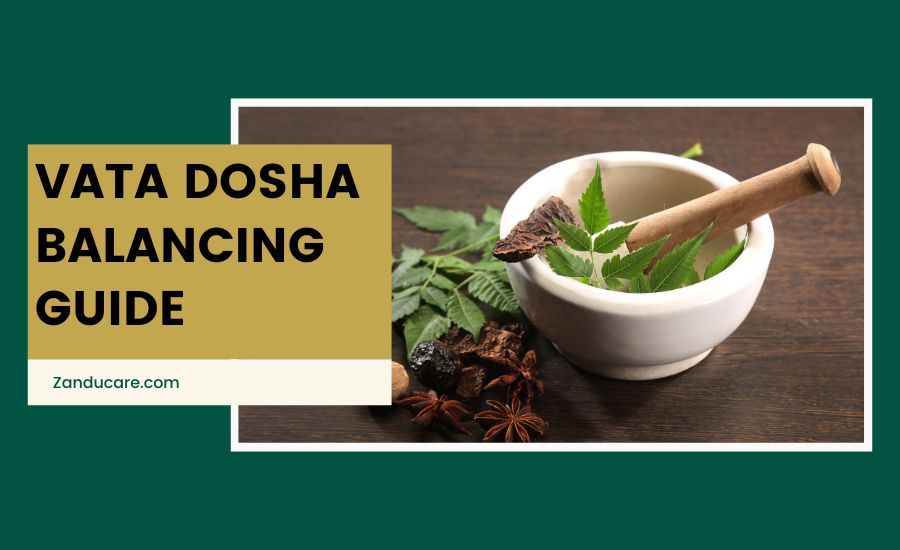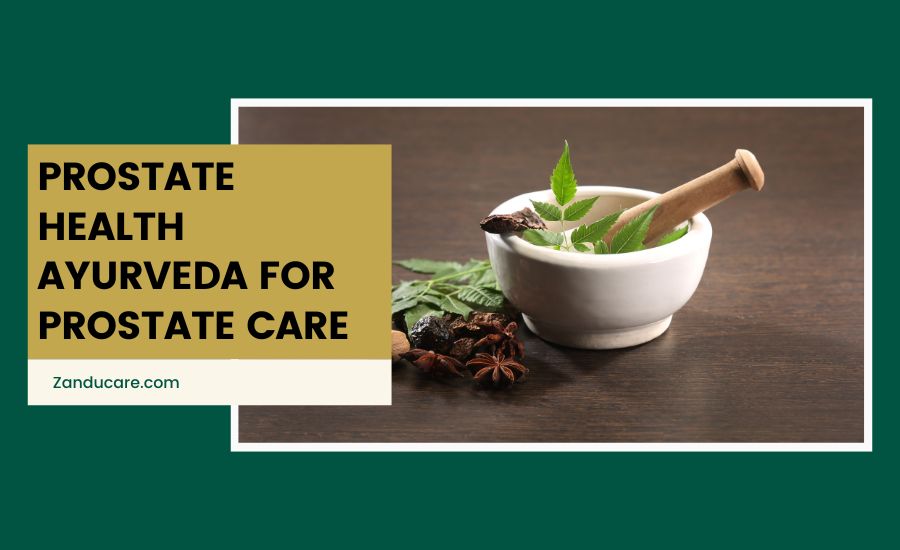
Reduce Stress & Cortisol | Improve Sleep & Muscle Recovery | >5% Withanolide Content | Scientifically Tested

Improves Gut Health with 2X Phyto Active*| Regulates Bowel Movement | Constipation Relief | Scientifically Proven
doshas in Ayurveda, governs movement, communication, and the nervous system. When Vata is in balance, you feel energetic, creative, and lively. However, an imbalanced Vata can lead to anxiety, dryness, and digestive issues.
To achieve harmony, focus on a diet that includes warm, nourishing foods and incorporate lifestyle changes that promote stability and routine. Eating cooked vegetables, whole grains, and healthy fats can soothe Vata's cold and dry nature. Regular exercise, meditation, and adequate sleep also help ground Vata's restless energy. This post will provide practical tips on adjusting your diet and lifestyle to keep your Vata Dosha balanced, ensuring you stay vibrant and healthy.
What is Vata Dosha in Ayurveda?

Vata dosha is associated with air or wind; it derives from the components of space and air. According to Ayurveda, Vata dosha regulates both the Pitta and Kapha doshas, which means it is the primary dosha in the body. Since Vata is the sole dosha that is active and promotes movement throughout the body, the other doshas become passive in the absence of it.
It facilitates the seamless operation of all bodily systems, including cells, tissues, the mind, organs, and senses, for both significant and minor functions. The human body comprises five interrelated vayus, or sub doshas, constituting the Vata dosha and facilitating daily functioning. The five types of vayus are called prana, samana, vyana, udana, and apana.
What are the Symptoms of Vata Dosha?
- Dry Skin and Hair: Experience dryness, flakiness, and rough texture.
- Cold Sensation: Feel cold quickly, particularly in the hands and feet.
- Weight Loss: Unintentional weight loss or difficulty gaining weight.
- Irregular Digestion: Symptoms like bloating, gas, and constipation.
- Restlessness and Anxiety: Feel anxious, nervous, or restless frequently.
- Insomnia: Trouble falling asleep or staying asleep.
- Joint Pain and Stiffness: Experience discomfort or stiffness in the joints.
- Fatigue and Low Energy: Feel tired without apparent cause.
- Irregular Menstrual Cycle: Experience changes in menstrual cycle regularity.
- Dry, Brittle Nails: Nails may become dry and break easily.
- Cravings for Sweet and Salty Foods: Strong desire for sugary and salty foods.
- Rapid Speech and Overthinking: Speak quickly and have a racing mind.
- Irregular Appetite: Fluctuate between extreme hunger and lack of appetite.
- Sensitive Nervous System: Easily overstimulated or disturbed by loud noises.
- Light and Interrupted Sleep: Wake up frequently during the night.
Foods to Consume in Vata Imbalance
1. Warm and Cooked Foods

Eat cooked and warm foods to balance your Vata Dosha. These foods offer the warmth required to balance Vata's frigid nature and are easier to digest. Go for seasonal vegetable and legume soups, stews, and casseroles. Use cinnamon, ginger, and cumin to promote warmth and facilitate digestion.
Avoid cold meals and raw salads, as these can worsen Vata. Additionally, helpful, cooked grains like quinoa, rice, and oats offer stability and sustenance.
2. Healthy Fats and Oils
Include healthy fats and oils in your diet to combat dryness, a common symptom of Vata imbalance. Ghee, sesame oil, and olive oil are excellent choices. These fats lubricate the body, promoting smooth digestion and healthy skin.
Drizzle oil over cooked vegetables or use it in cooking. Nuts and seeds, such as almonds and chia seeds, also provide beneficial fats. Remember to consume these in moderation to maintain a balanced diet and avoid overloading your system.
3. Sweet, Sour, and Salty Tastes
Eat a diet rich in healthy fats and oils to help fight dryness, a common sign of a Vata imbalance. Olive oil, sesame oil, and ghee are great options. Because they lubricate the body, these fats support healthy skin and easy digestion.
Use oil for frying or drizzle it over cooked veggies. Beneficial fats can also be found in nuts and seeds, like chia seeds and almonds. Always remember to eat these in moderation to keep your diet balanced and to prevent overburdening your body.
4. Grounding and Nourishing Grains

Eat grounding and nourishing grains to stabilize Vata energy. Rice, oats, quinoa, and wheat are excellent options. These grains provide sustained energy and are easy to digest. Cook them thoroughly and serve them warm, adding spices and healthy fats for additional benefits. Avoid refined grains and cold cereals, as they can disturb Vata balance. Incorporating grains into your meals helps maintain steady energy levels and supports overall health.
5. Root Vegetables and Squash
Squash and other root vegetables are great for balancing Vata since they are nutritious and grounded. Beets, sweet potatoes, carrots, and pumpkins all help with digestion while offering vital vitamins and minerals.
Cook these vegetables in stews, soups, or roasting recipes to maximise their warming properties. Their substantial structure and inherent sweetness balance the light and airy features of Vata, thereby fostering stability and comfort.
6. Herbal Teas and Warm Beverages
To balance Vata, sip warm liquids and herbal teas. Licorice, ginger, and cinnamon root teas are warming and aid digestion. Teas with chamomile and ashwagandha have a relaxing effect and can ease anxiety.
Steer clear of iced and caffeinated drinks, as they exacerbate Vata's dry and chilly qualities. Drinking warm water all day long promotes hydration and better digestion. Include these drinks in your regular regimen to keep your Vata Dosha balanced.
Ayurvedic Herbs for Vata Imbalance
|
Herb |
Description |
|
Ashwagandha |
Ashwagandha is a powerful adaptogenic herb known for its ability to reduce stress and anxiety, which are common symptoms of Vata imbalance. It helps calm the nervous system and promote restful sleep. Ashwagandha also supports physical strength and stamina, making it beneficial for those experiencing fatigue. This herb nourishes the body and mind, providing a grounding effect that counteracts Vata's erratic nature. Regular use of Ashwagandha can enhance overall vitality and effectively balance Vata energy. |
|
Ginger |
Ginger is a warming herb that is excellent for stimulating digestion and alleviating symptoms like bloating and gas, which are often associated with Vata imbalance. It enhances digestive fire (Agni) and helps absorb nutrients more efficiently. Ginger's anti-inflammatory properties soothe the digestive tract, reducing discomfort and promoting regularity. This herb also boosts circulation, providing warmth to the body, which is crucial for balancing Vata's cold nature. Including ginger in your daily diet can significantly improve digestive health and overall Vata balance. |
|
Triphala |
Triphala is a traditional Ayurvedic herbal formulation that consists of three fruits: Amalaki, Bibhitaki, and Haritaki. It is renowned for its gentle detoxifying and rejuvenating properties. Triphala helps regulate digestion, relieve constipation, and cleanse the colon, essential for balancing Vata. It also supports the immune system and enhances overall vitality. By promoting regular bowel movements and detoxifying the body, Triphala aids in maintaining a healthy balance of Vata Dosha. Regular use of Triphala can lead to improved digestive health and a sense of well-being. |
|
Cardamom(Elettaria cardamomum) |
One great spice that balances all three doshas is cardamom. It can help balance the Vata imbalance by considerably assisting with digestion and lowering gas and bloating. You can use cardamom as a spice by adding it to tea. Raw cardamom seeds can be chewed to freshen breath. |
|
Turmeric(Curcuma Longa) |
Turmeric, also known as haldi, is frequently used in South Asian cooking and Ayurvedic medicine. It raises heart rate, circulation, and metabolic rate. Turmeric curcumin possesses anti-inflammatory, antioxidant, and anti-cancer qualities that help balance Vata imbalance. Turmeric powder can be eaten as a spice or as a capsule supplement. |
Also, do check our range of ayurvedic medicines for Vata dosha balancing.
Food to Avoid in Vata Imbalance
Cold and Raw Foods
Avoid cold and raw foods like salads, raw vegetables, and smoothies. These foods can increase Vata's cold and dry qualities, leading to digestive issues such as gas and bloating. Instead, opt for warm, cooked meals that are easier to digest and help balance Vata. Soups, stews, and steamed vegetables are excellent choices. Warm foods soothe and nourish the body, promoting better digestion and overall well-being. Avoiding cold and raw foods helps maintain Vata balance and prevent common Vata-related health issues.
Dry and Light Foods
Clear, dry, light foods such as crackers, popcorn, and dry cereals. These foods can exacerbate Vata's dryness and lightness, leading to symptoms like dry skin, constipation, and restlessness. Opt for moist, oily, and grounding foods that provide hydration and stability. Include dishes with ghee, olive oil, and coconut oil to add moisture to your diet.
Moist foods help counteract Vata's dry qualities, ensuring better hydration and smoother digestion. Avoiding dry and light foods can keep Vata balanced and support overall health.
Bitter and Astringent Foods
Limit bitter and astringent foods like leafy greens, raw apples, and lentils. These foods can aggravate Vata's dryness and coldness, causing digestive discomfort and increased anxiety. Instead, favours sweet, sour, and salty tastes, which are more balanced for Vata. Sweet potatoes, ripe fruits, and dairy products like milk and cheese are great alternatives.
These foods help nourish and ground Vata, promoting better emotional and physical stability. Reducing the intake of bitter and astringent foods helps maintain a balanced Vata and enhance overall well-being.
Spicy and Pungent Foods
Avoid overly spicy and pungent foods such as hot peppers, onions, and garlic. These foods can overstimulate Vata, leading to issues like heartburn, indigestion, and increased anxiety. Instead, choose mild spices like cinnamon, cardamom, and fennel that are soothing for Vata. Mild spices add flavour without causing irritation or overstimulation.
By avoiding spicy and pungent foods, you can prevent Vata from becoming unbalanced and maintain a calm and steady state of mind and body.
Caffeinated and Carbonated Beverages
Steer clear of caffeinated and carbonated beverages like coffee, black tea, and soda. These drinks can increase Vata's restlessness and anxiety, leading to sleep disturbances and nervousness. Opt for herbal teas, warm water, and natural fruit juices instead. Herbal teas such as chamomile and peppermint are calming and help ground Vata.
Warm beverages promote relaxation and hydration without the stimulating effects of caffeine. Avoiding caffeinated and carbonated beverages supports Vata's balance and improves overall mental and physical health.
Processed and Frozen Foods
Avoid processed and frozen foods like packaged snacks, frozen dinners, and instant meals. These foods lack the freshness and nutritional value needed to balance Vata and can contribute to digestive issues and feelings of instability. Instead, focus on fresh, home-cooked meals using wholesome ingredients.
Fresh foods provide the nutrients and energy necessary for maintaining Vata balance and promoting overall health. Avoiding processed and frozen foods can ensure better digestion, more stable energy levels, and improved well-being.
Conclusion
Balancing Vata Dosha involves making thoughtful dietary and lifestyle choices. Focus on consuming warm, cooked, nourishing foods like soups, stews, and whole grains. Avoid cold, dry, and raw foods to prevent imbalance. Incorporate daily routines that promote stability, such as regular exercise, meditation, and adequate sleep. Stay hydrated and practice calming activities to soothe Vata's restless energy. Maintaining a balanced diet and a stable lifestyle can keep Vata Dosha in harmony, enhancing overall health and well-being. Remember, small, consistent changes can make a big difference in balancing Vata.
FAQs
1. What foods should Vata dosha eat and avoid?
Vata dosha are best balanced by sweet, salty, and sour foods; conversely, they may get aggravated by pungent, bitter, and astringent foods. An example of a vata dosha diet might be drinks such as warm teas, nut milks, buttermilk, and water that is either warm or at room temperature. Meat and eggs: eggs, turkey, chicken, and beef.
2. Is rice good for Vata?
Rice is a healthy dish that is light, delicate, and smooth. It is refreshing. In general, rice helps to balance Pitta and Vata. Overindulging in rice is not recommended for Kapha since it could produce too much mucus.
3. What is the best breakfast for Vata dosha?
A Vata staple is an egg on buttered toast. To make it a little more nourishing, add avocado and sautéed spinach or warm milk oats flavoured with honey, cinnamon, ghee, almonds, and flax seeds. This will help you maintain your enthusiastic, active lifestyle and keep you fuller for longer.
4. Is banana good for Vata?
Yes, in moderation, bananas are beneficial for Vata. Naturally sweet and calming, bananas support Vata balancing. Potassium, magnesium, and fibre (rich in them) support regularity and nourish the muscles and nerves. But because they are light and dry, too many bananas might raise Vata.
References
- doshas in Ayurveda, governs movement, communication, and the nervous system.(https://www.ijfmr.com/ )
- Avoid overly spicy and pungent foods such as hot peppers, onions, and garlic.(https://www.iosrjournals.org/)
- These foods can aggravate Vata's dryness and coldness, causing digestive discomfort and increased anxiety.(https://www.researchgate.net/profile)
- These drinks can increase Vata's restlessness and anxiety,(https://www.researchgate.net/profile/)





